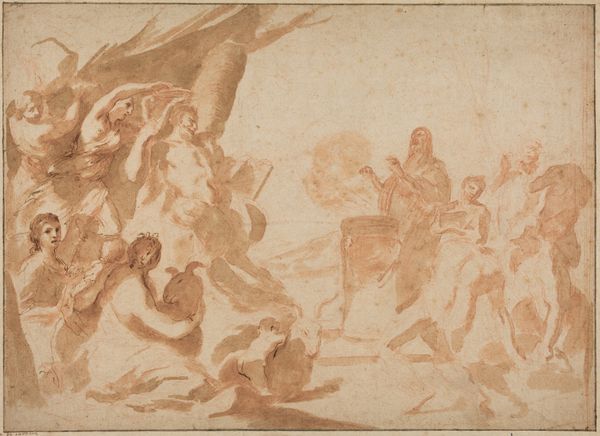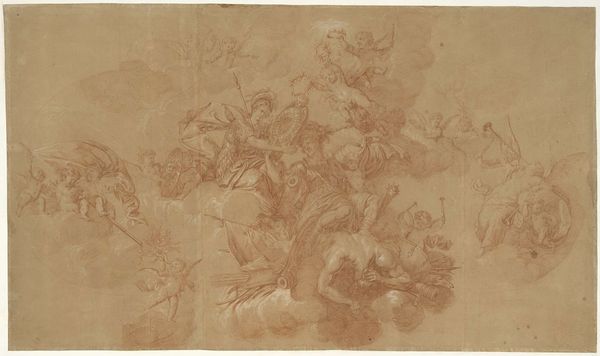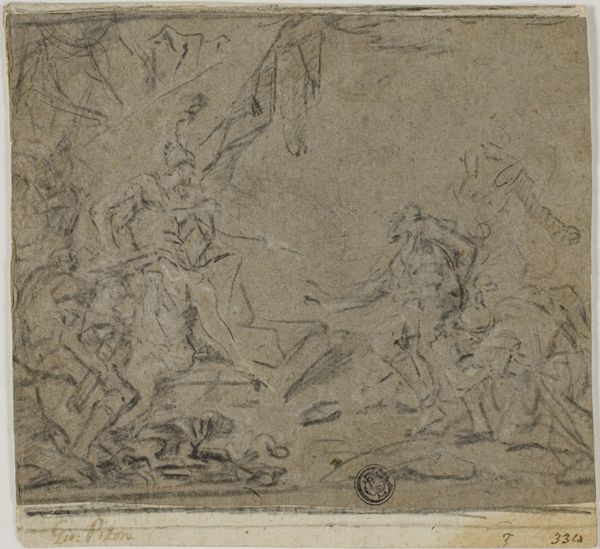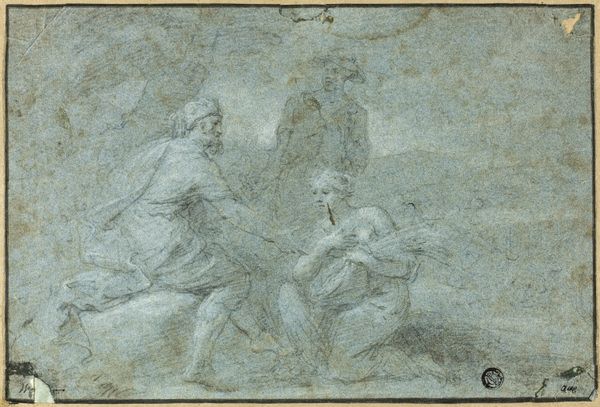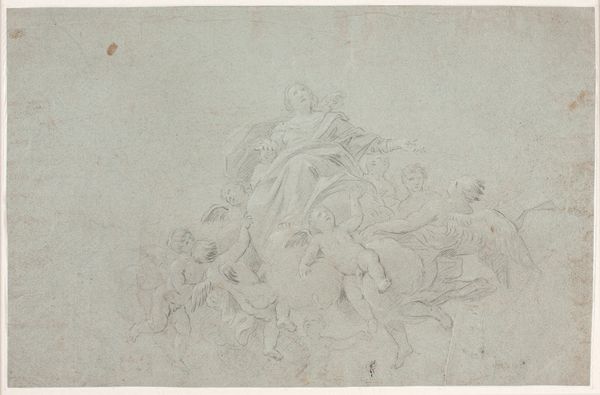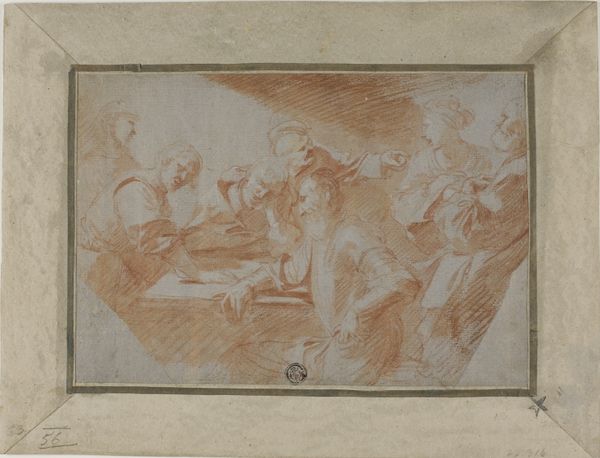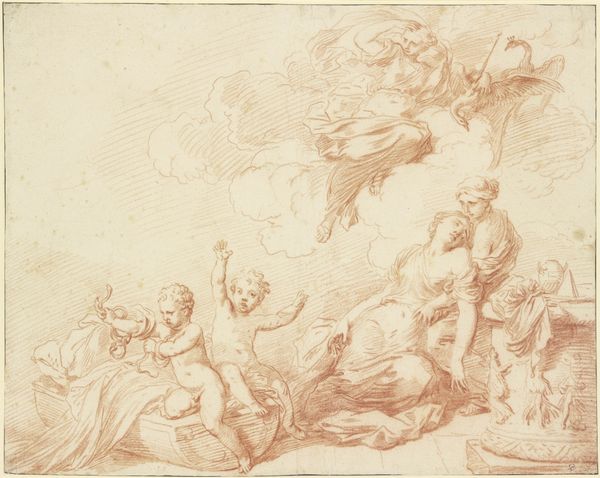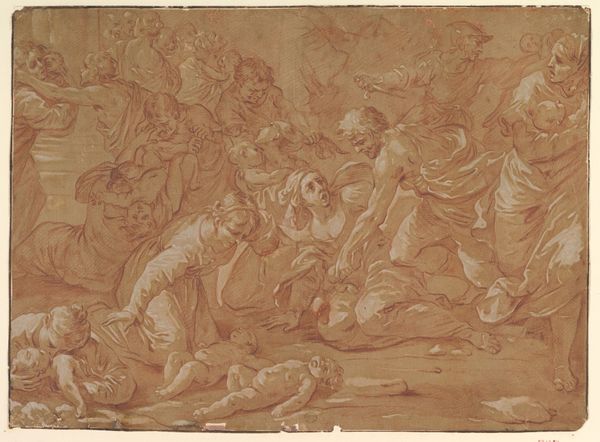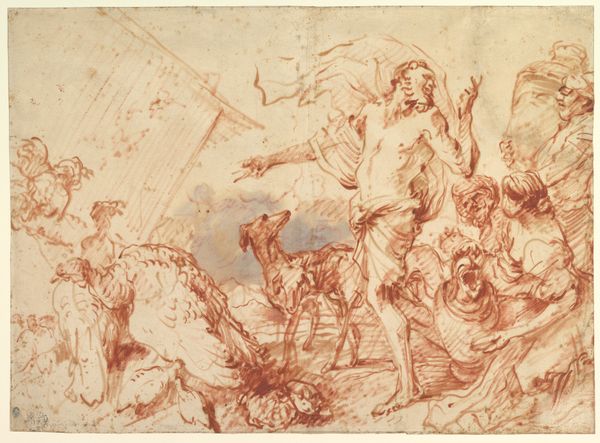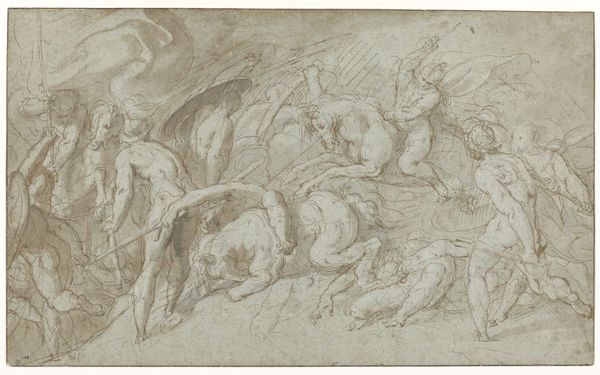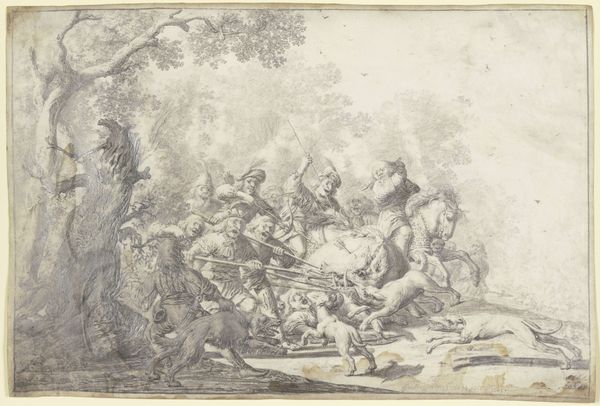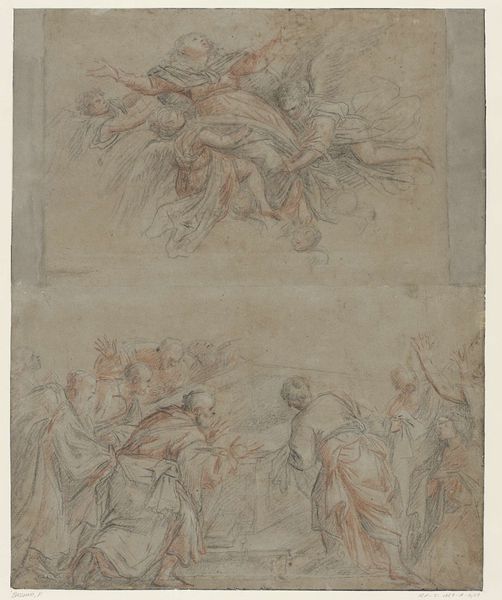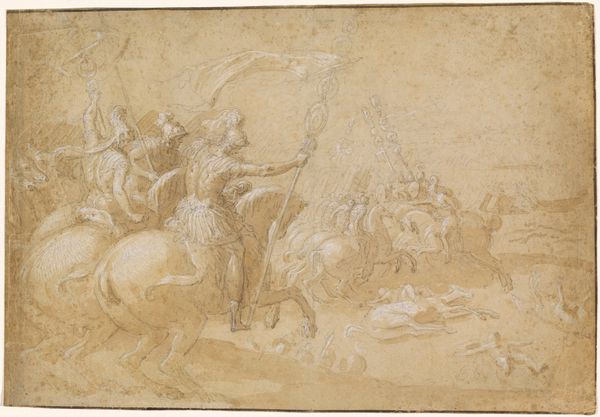
drawing, print, paper, chalk, pen, charcoal
#
drawing
#
narrative-art
# print
#
charcoal drawing
#
figuration
#
paper
#
11_renaissance
#
chalk
#
pen
#
charcoal
#
history-painting
#
academic-art
Dimensions: 330 × 452 mm
Copyright: Public Domain
Editor: Here we have "Conversion of Saint Paul," an 18th-century drawing, using pen, charcoal, and chalk on paper, attributed to Raphael. It’s a chaotic scene, full of movement and figures in dramatic poses. I find it compelling. What do you see in this piece, especially from a historical perspective? Curator: This drawing, even attributed, speaks volumes about the socio-political role of art in its time. How was religious narrative used and understood? Consider the visual language: the idealized bodies, the dynamic composition, the divine intervention from above. It’s deeply rooted in academic art traditions that served specific didactic purposes, reaffirming religious doctrine, and displaying the patron's piety. Editor: So, its power wasn’t just aesthetic but also social? How did images like this function publicly? Curator: Precisely. Think of the audiences this image catered to. Wealthy collectors? Aspiring artists? Was it meant for private contemplation or public display, even in print form? Its impact varied across different social groups. These depictions of religious events acted as visual instruction and tools for shaping public morals. The composition almost choreographs where your eyes should land and linger. Who were the influencers? Editor: I hadn’t thought about the “choreography” aspect! Considering the historical and political context makes it less about pure artistry and more about its function in shaping society’s beliefs. So how did art serve power? Curator: Indeed. Art in the 18th century was inextricably linked with power. Understanding this dynamic unveils the subtle yet profound influence artworks had on shaping social norms, religious practices, and even political ideologies. These weren't passive images, they were active participants in culture. Editor: It really sheds light on how art wasn't just beautiful but influential. Thanks, this gives me much to think about regarding art’s broader purpose! Curator: Absolutely! Exploring art in relation to its social function changes our whole understanding of its significance.
Comments
No comments
Be the first to comment and join the conversation on the ultimate creative platform.
